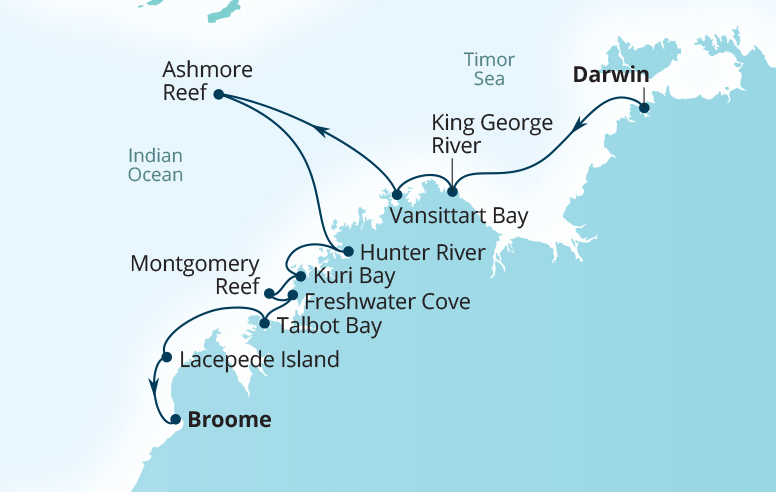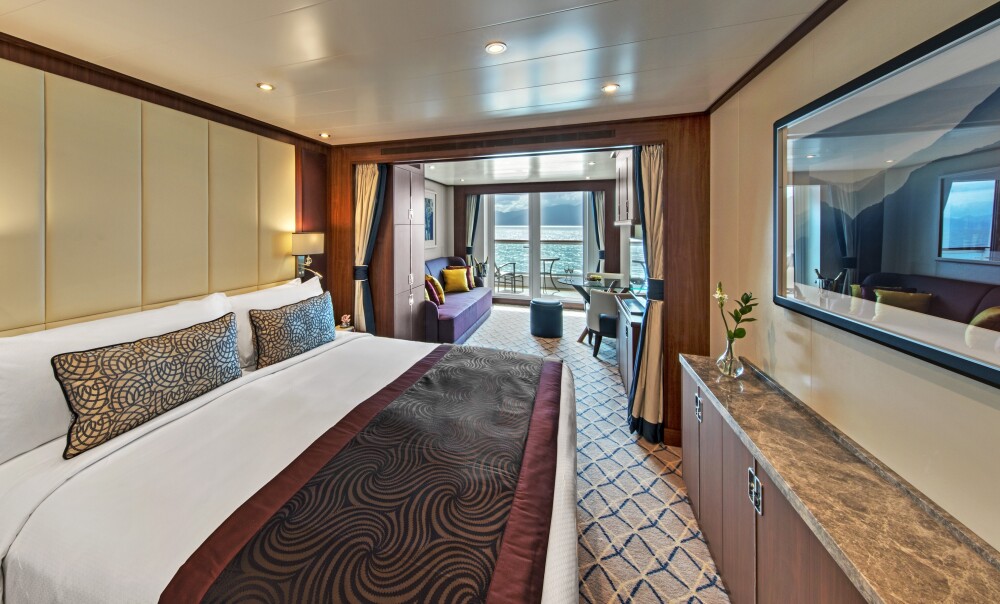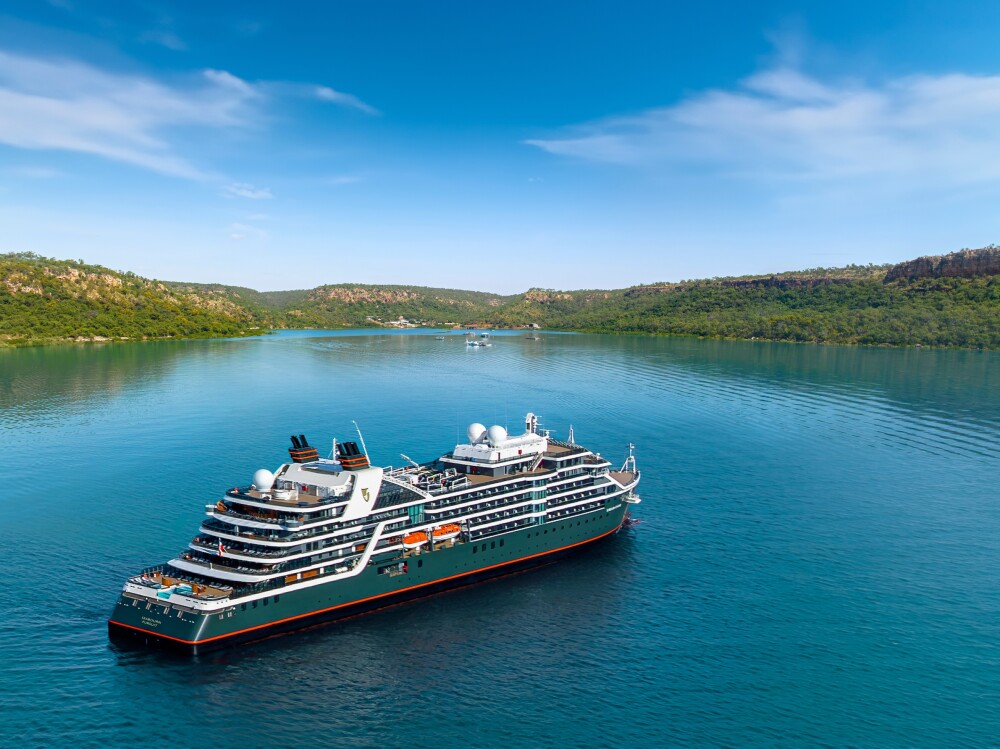Day 0: Darwin, Western Australia
Darwin, the capital of the Northern Territory, is a vibrant city with a population of about 150,000. It boasts a tropical climate and a rich multicultural heritage, blending Indigenous traditions with influences from various international communities. Founded by the HMS Beagle in 1839 and named after Charles Darwin, the city has been rebuilt multiple times following cyclones and WWII air raids, and offers a wealth of historical and cultural experiences.
Day 1: At Sea
Day 2: King George River, Western Australia
King George River, a striking waterway in Western Australia, is known for its dramatic gorges and waterfalls. The river cuts through rugged terrain, creating breathtaking scenery and providing a haven for local wildlife.
Day 3: Vansittart Bay, Western Australia
Vansittart Bay, a small and remote bay, is notable for its historical significance during World War II and its Gwion Gwion (Bradshaw) rock art found on Jar Island. This ancient art, created by Aboriginal people, is believed to have been made by birds using their own blood. Jar Island, named for the clay jars used by early Indonesian traders, adds a unique cultural and historical dimension to the visit.
Day 4: Ashmore Reef, Australia
Ashmore Reef Marine Park, located about 630 km north of Broome, encompasses a variety of marine habitats, including seagrass meadows, coral reefs, and lagoons. It supports a rich diversity of species, including sea snakes, dugongs, and numerous turtles. The park is notable for its pristine environment and is a critical site for marine life and conservation.
Day 5: Hunter Valley, Western Australia
Hunter Valley, named by explorer Philip Parker King in 1820, features a large mangrove estuary and is home to diverse bird species such as the Osprey and Brahminy Kite. The Mitchell River National Park, a remote expanse in the Kimberley, is renowned for its scenic beauty and biological importance. The Mitchell Plateau, with its rainforest patches and unique ecosystems, offers a glimpse into one of Western Australia’s most picturesque and ecologically rich areas.
Day 6: Kuri Bay, Western Australia, Australia
Tucked within the remote fjordlands of the Kimberley, this bay is famed as the birthplace of Australia’s cultured pearl industry, first established in 1956 and later producing some of the world’s finest South Sea pearls. Today, it forms part of a vast nature reserve rich with marine life—sharks, turtles, crocodiles, and migrating humpback whales. Nearby, Montgomery Reef puts on a spectacular show as powerful tides create dramatic “horizontal waterfalls,” while Sheep Island reveals haunting relics of early settlement against a backdrop of rugged red cliffs that blaze at sunrise and sunset.
Day 7: Montgomery Reef, Western Australia
Montgomery Reef, the world’s largest inshore reef, surrounds Yawajaba Island on the Kimberley coast. As the tide falls, vast lagoons, islets, and mangroves emerge, while torrents of water carve rivers through the reef, creating hundreds of cascading waterfalls. This natural spectacle draws turtles, manta rays, reef sharks, dugongs, and flocks of migratory birds.
Day 7: Freshwater Cove, Western Australia
Wiggingarra Butt Butt (Freshwater Cove), beside Montgomery Reef, is a year-round freshwater site long used as a traditional camp. Today, it is managed with the Damibmangari people, who hold deep cultural ties to the surrounding marine park and islands.
Day 8-9: Talbot Bay, Western Australia
Talbot Bay is home to the famous Horizontal Waterfalls, a rare tidal phenomenon in the Buccaneer Archipelago. As powerful tides surge through narrow sandstone gorges, water levels differ by several meters, creating the striking illusion of waterfalls flowing sideways.
Day 9: Lacepede Island, Western Australia
The Lacepede Islands, off the Kimberley coast, are a pristine sanctuary of rugged shores, white sands, and clear waters teeming with life. Known for vast colonies of nesting seabirds like brown boobies and roseate terns, they also shelter rich marine ecosystems of coral and fish. Remote and untouched, the islands offer a rare chance to witness the Kimberley’s wild beauty.
Day 10: Broome, Australia
Broome, on Western Australia’s northwest coast, blends natural beauty with a rich pearling past. Once isolated, the town flourished after the discovery of abundant pearl shell deposits, attracting fortune seekers much like a gold rush. Today, its sapphire seas, bird-filled Roebuck Bay, and unique mix of colonial, mission, and pearling-era architecture give Broome a character all its own.




